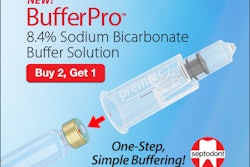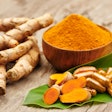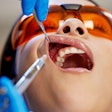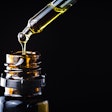Dental researchers at the University of Texas (UT) Health Science Center at San Antonio have identified a substance similar to capsaicin, which gives chili peppers their heat, and are using it to create a new class of nonaddictive analgesics, according to a study published April 26 in the Journal of Clinical Investigation.
The senior investigator was Kenneth Hargreaves, D.D.S., Ph.D., professor and chair of the department of endodontics at the UT Health Science Center School of Dentistry. Amol Patwardhan, M.B.B.S., Ph.D., a graduate of the Health Science Center's department of pharmacology who worked under Dr. Hargreaves' supervision, is the lead author.
"Capsaicin is an ingredient in hot chili peppers and causes pain by activating a receptor called transient potential vanilloid 1 (TRPV1). We started out seeking the answer to the question 'Why is TRPV1 consistently activated in the body upon injury or painful heat?' We wanted to know how skin cells talk to pain neurons," Dr. Hargreaves said in a news release. "What we found was much more surprising and exciting. We have discovered a family of endogenous capsaicinlike molecules that are naturally released during injury, and now we understand how to block these mechanisms with a new class of nonaddictive therapies."
Oxidized linoleic acid metabolites
Dr. Hargreaves and his colleagues used flaps of skin from laboratory mice that were heated in a water bath at temperatures greater than 43° Celsius. The degree of heat used was significant because the human body normally begins to feel discomfort and pain at 43° Celsius and higher, Dr. Hargreaves noted.
TRPV1 resides on the membranes of pain- and heat-sensing neurons. When a person eats a hot chili pepper, for example, he immediately feels a burning sensation because the capsaicin, the primary ingredient in the chili pepper, has activated the TRPV1 protein in the pain neurons. In high concentrations, capsaicin can also cause a burning effect on other sensitive areas of the skin.
The fluid from the heated skin was then applied to sensory neurons cultured from two sets of laboratory mice, including one set of animals in which a gene was deleted or "knocked out." Neurons from the wild type (nonaltered) mice were sensitive to capsaicin, the main ingredient in chili peppers. The neurons of the knockout mice, in which the TRPV1 gene was deleted, were insensitive to capsaicin and were used as the control.
"We found that in the skin flaps heated at greater than 43° Celsius, the cells' pain neurons showed tremendous activity in the wild type, but not in neurons from mice that lacked TRPV1," Dr. Hargreaves said. He indicated that this novel phenomenon was taking place because the cells, in response to the heat, began to create their own natural endogenous capsaicins, which they later identified as a series of compounds or fatty acids called oxidized linoleic acid metabolites (OLAMs).
"This is a major breakthrough in understanding the mechanisms of pain and how to more effectively treat it," Dr. Hargreaves said. "These data demonstrate, for the first time, that OLAMs constitute a new family of naturally occurring capsaicinlike agents, and may explain the role of these substances in many pain conditions. This hypothesis suggests that agents blocking either the production or action of these substances could lead to new therapies and pharmacological interventions for various inflammatory diseases and pain disorders such as arthritis, fibromyalgia, and others, including pain associated with cancer."
The research has led Dr. Hargreaves' team to develop two new classes of analgesics using drugs that either block the synthesis of OLAMs or antibodies that inactivate them. These drugs could eventually come in the form of a topical agent, a pill or liquid that could be ingested, or an injection. All three approaches have the potential to block pain at its source, unlike opioid narcotics that travel to the brain and affect the central nervous system.
Copyright © 2010 DrBicuspid.com



















